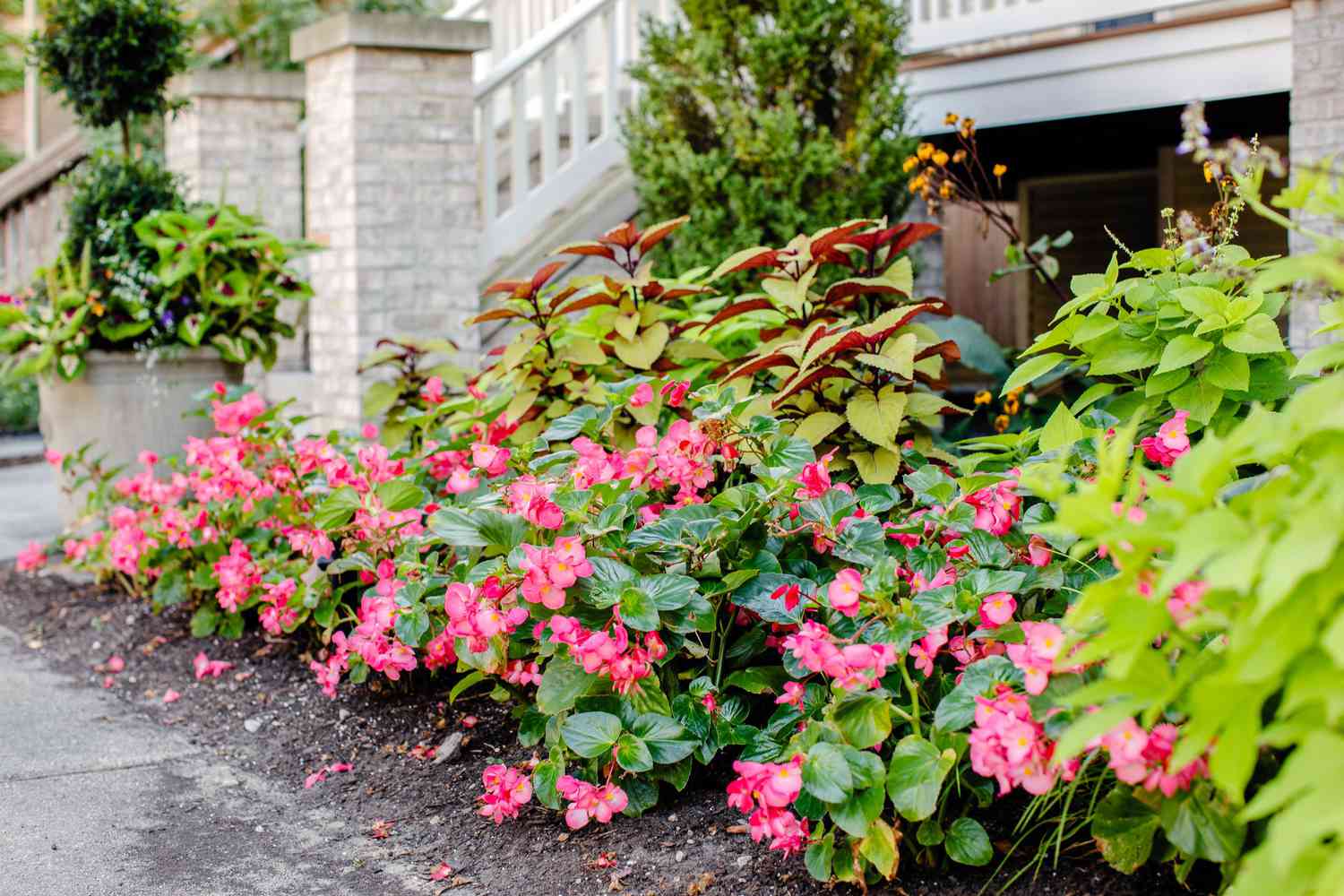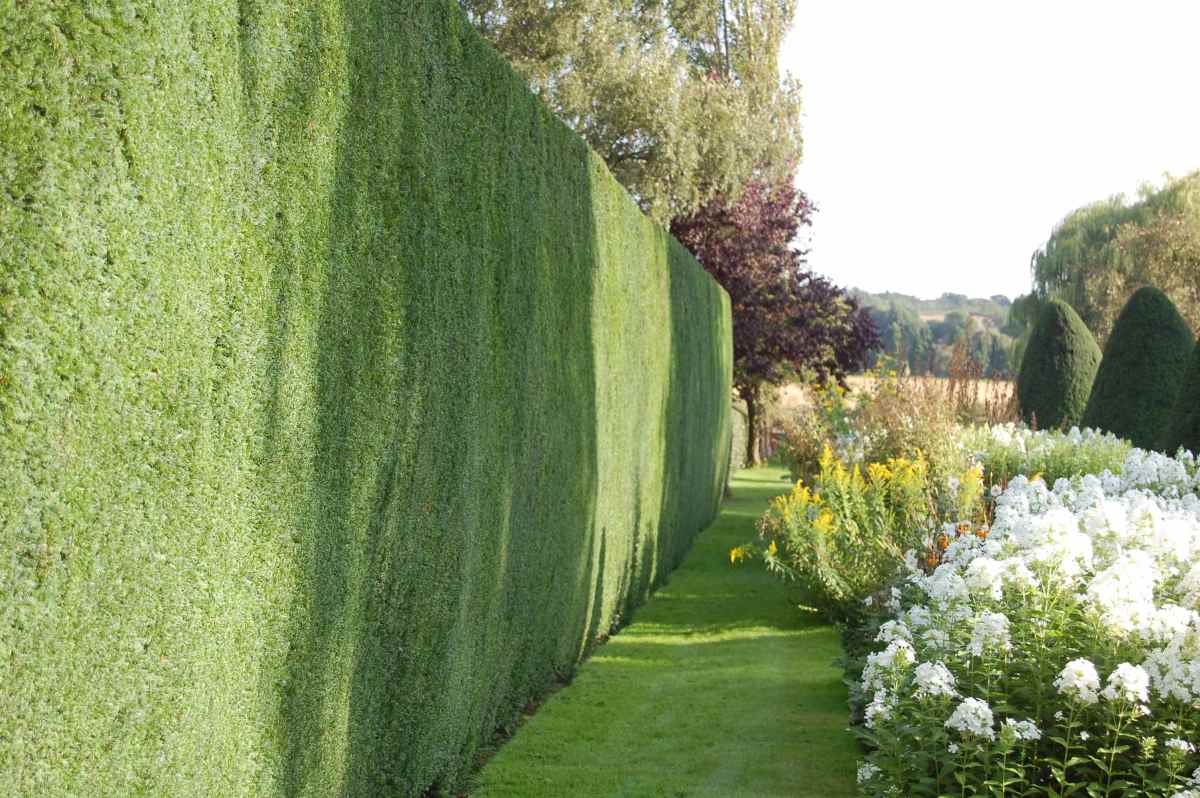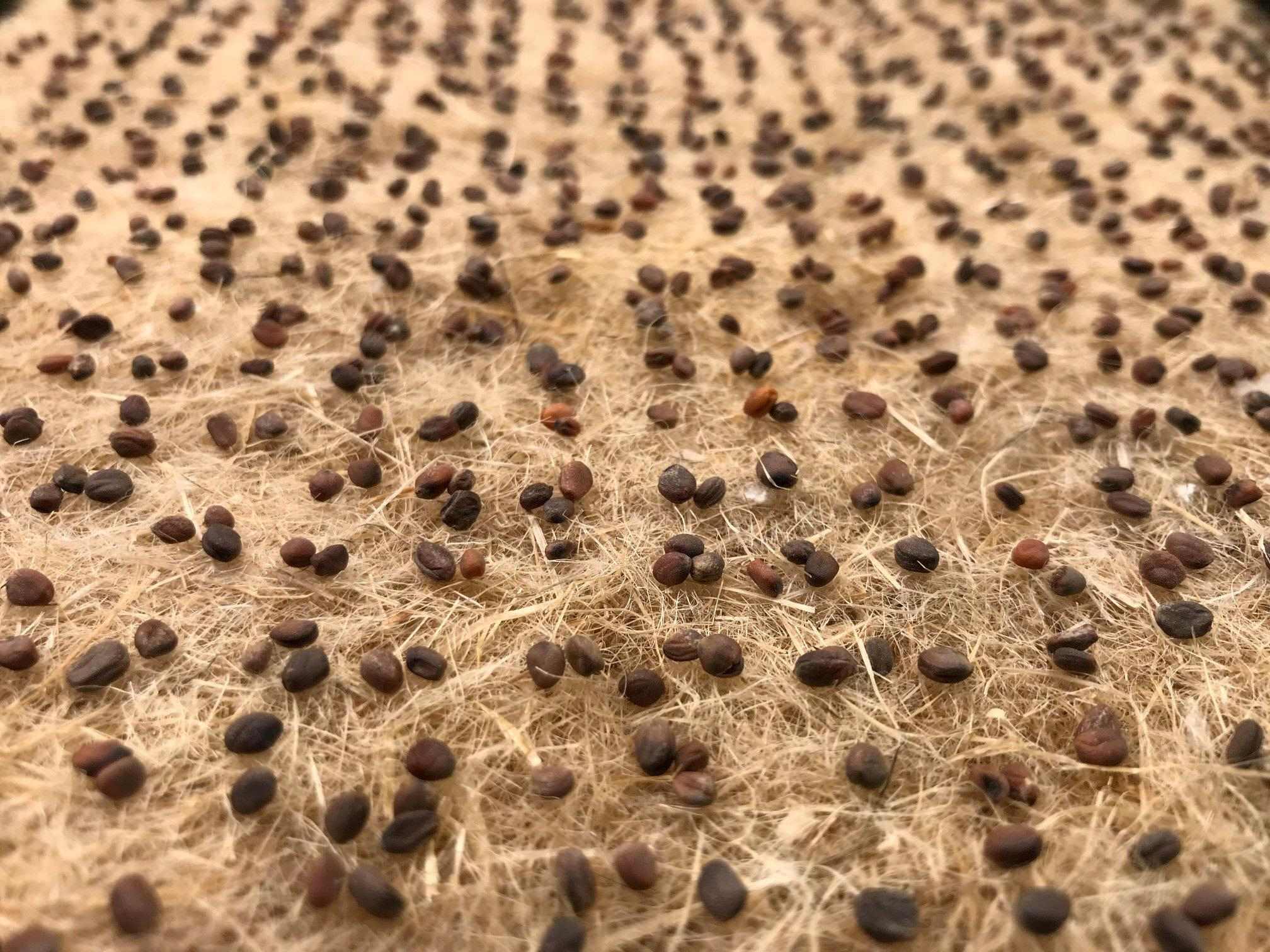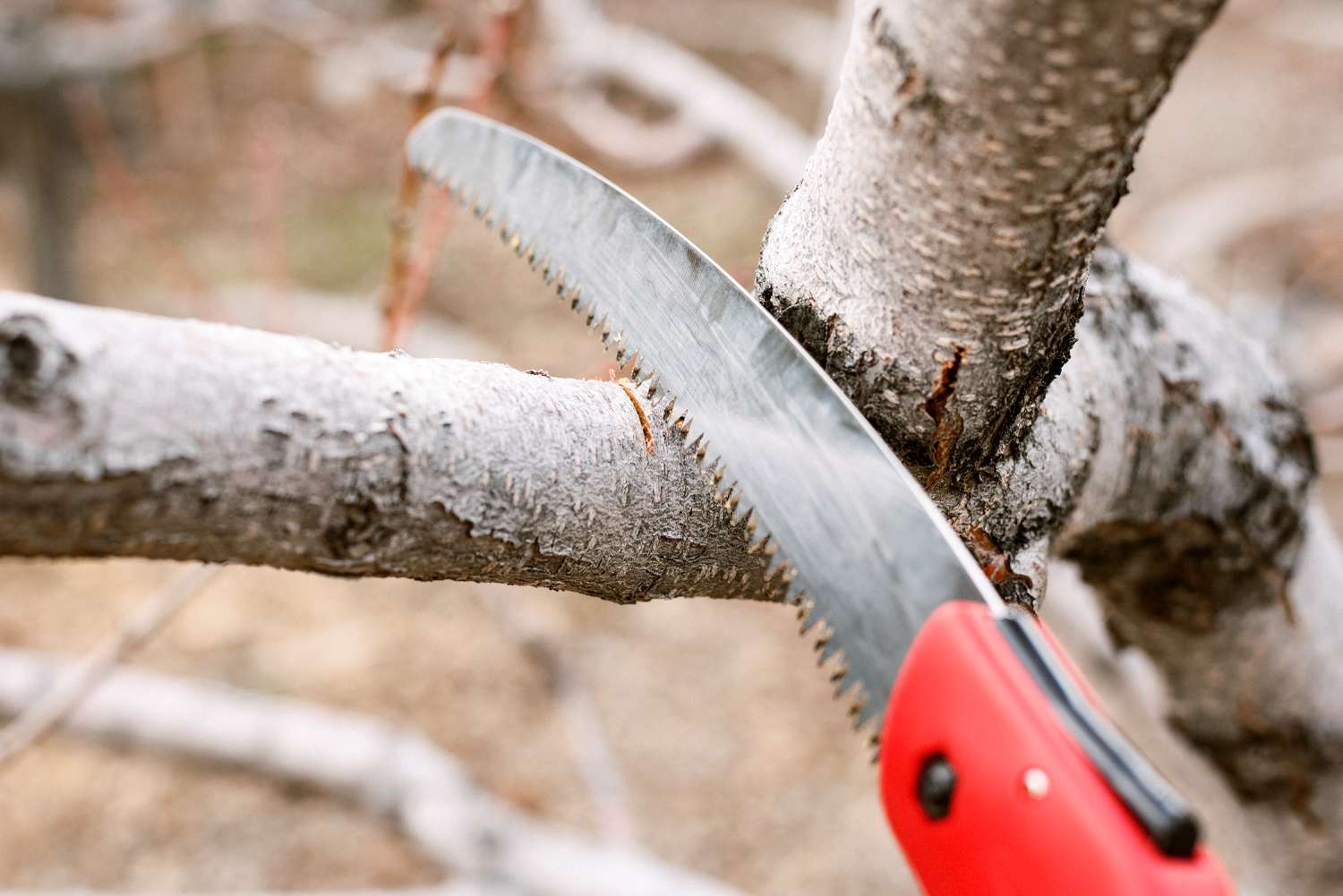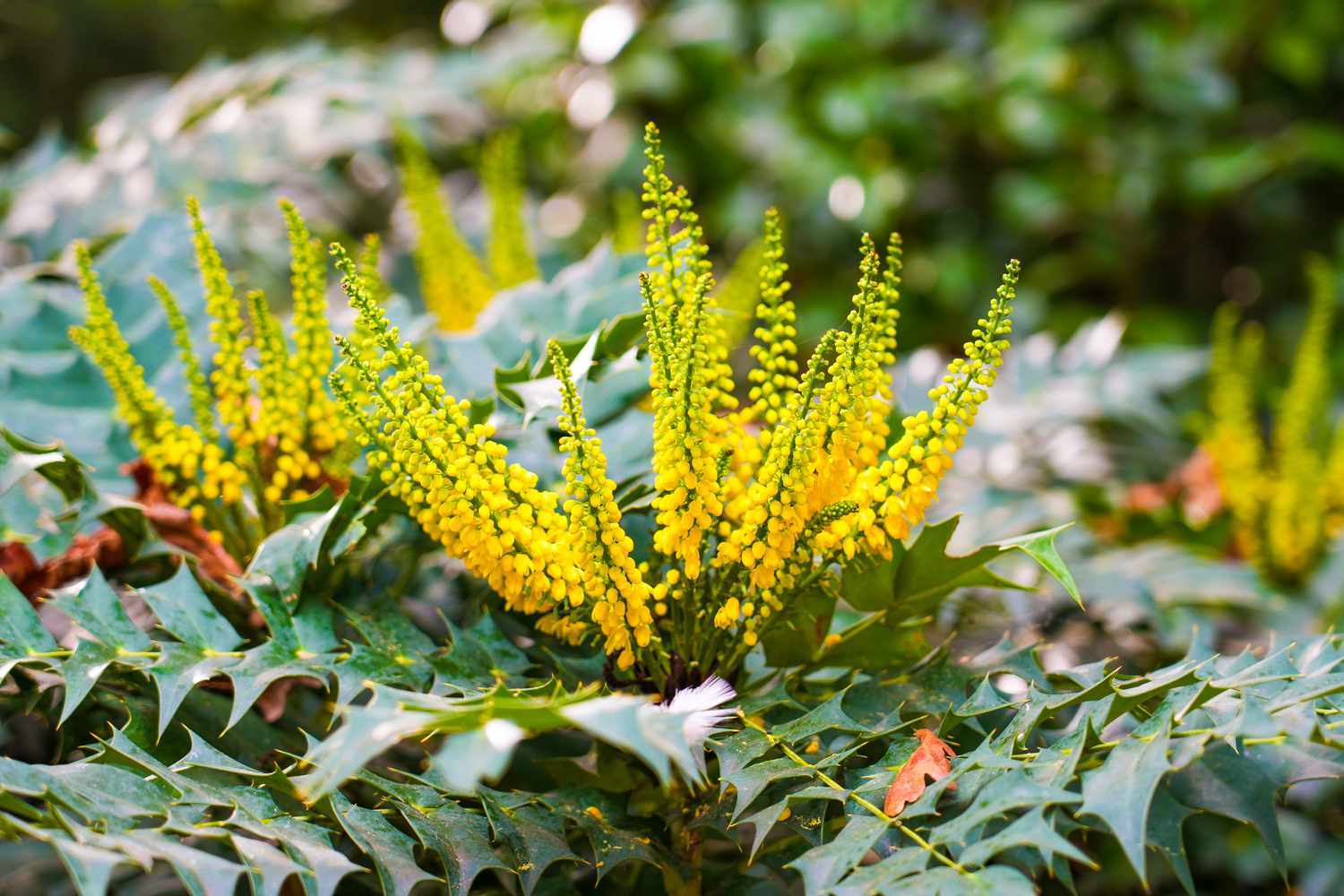Home>Garden Design>Planning Your Garden>What Shrubs Are Used For Hedges
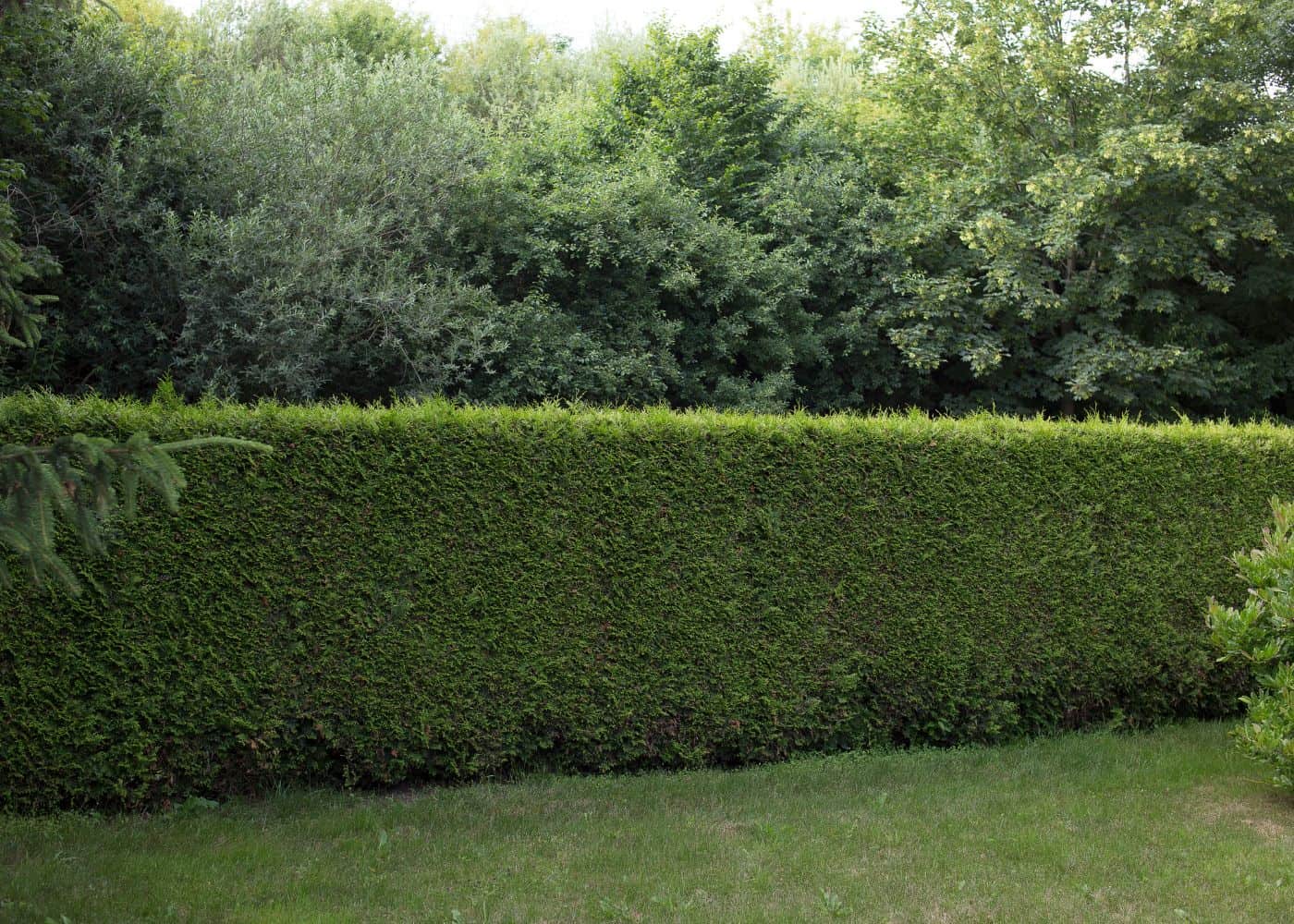

Planning Your Garden
What Shrubs Are Used For Hedges
Modified: February 8, 2024
Learn about the best shrubs for creating beautiful hedges in your garden. Find helpful tips and advice for planning your garden and achieving stunning results.
(Many of the links in this article redirect to a specific reviewed product. Your purchase of these products through affiliate links helps to generate commission for Chicagolandgardening.com, at no extra cost. Learn more)
Table of Contents
- Introduction
- Benefits of Using Shrubs for Hedges
- Popular Shrubs for Hedge Planting
- Boxwood
- Privet
- Arborvitae
- Holly
- Yew
- Factors to Consider When Choosing Shrubs for Hedges
- Height and Width
- Growth Rate
- Density and Foliage
- Maintenance Requirements
- Environmental Adaptability
- How to Plant Shrubs for Hedges
- Site Preparation
- Shrubs Selection and Spacing
- Planting Techniques
- Watering and Mulching
- Pruning and Maintenance Tips
- Conclusion
Introduction
Welcome to the world of garden planning! One of the key elements in creating a beautiful and functional garden is the use of shrubs for hedges. These versatile plants not only add structure and privacy to your outdoor space but also enhance its overall aesthetics. Whether you have a small suburban garden or a sprawling estate, incorporating shrubs into your hedges can transform your landscape into a stunning oasis.
Shrubs are popular choices for hedges due to their ability to create natural boundaries and provide a sense of enclosure. They offer numerous benefits, from acting as windbreaks to providing habitat for birds and beneficial insects. Additionally, shrubs can lend year-round interest to your garden with their foliage, flowers, and berries.
In this article, we will explore the various advantages of using shrubs for hedges, as well as some of the most popular shrubs for planting. We will also discuss important factors to consider when choosing shrubs for your hedges and provide tips on planting and maintenance.
So, whether you’re a seasoned gardener looking to revamp your existing hedge or a beginner starting from scratch, let’s dive into the wonderful world of shrubs for hedges and discover how they can elevate your garden to new heights!
Benefits of Using Shrubs for Hedges
Using shrubs for hedges offers a multitude of benefits that make them a popular choice for gardeners. Here are some key advantages to consider:
1. Privacy: Shrubs planted in a hedge formation create a natural and attractive barrier, providing privacy from neighbors and shielding your garden from prying eyes. They can serve as a living fence, allowing you to enjoy your outdoor space in peace.
2. Windbreak: Well-placed shrubs act as effective windbreaks, reducing wind speeds and protecting more delicate plants in your garden. They create a microclimate, ensuring that your garden remains sheltered and protected from harsh winds.
3. Noise reduction: Shrubs can help absorb and muffle unwanted noise, especially in urban or busy areas. Their dense foliage helps to block out sounds, creating a more tranquil environment for you to relax in.
4. Visual appeal: Shrubs add structure and formality to your garden. With their varied shapes, sizes, and foliage, they create pleasing aesthetics and can be pruned into neat and defined shapes. They also provide an attractive backdrop for other plants and garden features.
5. Wildlife habitat: Shrubs make excellent homes for birds, insects, and other wildlife. They provide nesting sites, shelter, and food sources throughout the year. By incorporating shrubs into your hedges, you are encouraging biodiversity and creating a thriving ecosystem in your garden.
6. Year-round interest: Many shrubs offer year-round interest, ensuring that your garden looks beautiful even during the winter months. From evergreen species with persistent foliage to those that bloom with vibrant flowers in spring or bear colorful berries in autumn, shrubs can bring visual interest throughout the year.
7. Low maintenance: Compared to traditional fences, shrub hedges require less maintenance. Once established, they generally require minimal pruning and can often be left to grow naturally. This saves you time and effort, allowing you to enjoy your garden rather than constantly maintaining it.
These are just a few of the benefits that using shrubs for hedges can offer. Their versatility, functionality, and aesthetic appeal make them an excellent choice for any garden. Now let’s delve into some of the most popular shrubs that are commonly used for hedges.
Popular Shrubs for Hedge Planting
When it comes to choosing shrubs for hedge planting, there are several options to consider. The ideal shrub will depend on your specific gardening goals, climate, and personal preferences. Here are five popular shrubs that are commonly used for hedging:
1. Boxwood: Boxwood (Buxus) is a classic choice for formal hedges. With its dense, evergreen foliage and ability to tolerate shearing, it can be easily shaped into various geometric forms. Boxwood hedges provide a timeless and elegant look to any garden.
2. Privet: Privet (Ligustrum) is another widely used shrub for hedges. It is fast-growing and can quickly fill in gaps to create a dense and effective privacy screen. Privet hedges are known for their glossy, dark green leaves and delicate white flowers that attract butterflies and bees.
3. Arborvitae: Arborvitae (Thuja) is an evergreen conifer that is often used for tall hedges. Its tall and columnar growth habit makes it an excellent choice for formal or informal hedging. Arborvitae hedges provide year-round privacy and are highly adaptable to different soil conditions.
4. Holly: Holly (Ilex) is a versatile shrub that can be used for both formal and informal hedges. Known for its prickly leaves and bright red berries in the winter, holly adds visual interest and attracts birds to your garden. It is important to select the right holly variety, as some species have male and female plants, requiring both for berry production.
5. Yew: Yew (Taxus) is a slow-growing evergreen shrub that is often used for formal hedges. Its dark green foliage and ability to tolerate heavy pruning make it a popular choice for creating geometric shapes. Yew hedges can add a touch of elegance and formality to any garden.
These are just a few examples of popular shrubs used for hedge planting. Other options to consider include Leyland cypress, Euonymus, and Rose of Sharon. Before making your final selection, it is important to consider various factors to ensure the chosen shrub is well-suited for your specific garden needs. Let’s explore some of these factors in the next section.
Boxwood
Boxwood (Buxus) is a popular shrub for creating formal hedges. Its dense, evergreen foliage and ability to tolerate shearing make it an excellent choice for those looking to add structure and elegance to their garden. Here are some key characteristics and considerations when planting boxwood hedges:
Appearance: Boxwood shrubs have small, dark green leaves that retain their color throughout the year. Their compact growth habit allows them to be easily pruned into various shapes, such as rectangles or spheres. Boxwood hedges provide a neat and polished look to any garden.
Height and Width: Boxwood can vary in height, ranging from low-growing cultivars that reach around 1 foot to taller varieties that can reach up to 10 feet or more. The width of boxwood hedges can be controlled through regular trimming and pruning.
Sun and Soil Requirements: Boxwood performs best in partial shade to full sun, although some varieties can tolerate more shade. They prefer well-draining soil with good organic content. It is essential to ensure proper soil drainage to prevent root rot.
Growth Rate: Boxwood is a slow-growing shrub, requiring patience when establishing a boxwood hedge. While this slow growth rate means less frequent pruning, it may take a few years for the hedge to reach its desired height and fullness.
Maintenance: Boxwood hedges require regular pruning to maintain their desired shape. They can be pruned in early spring or late summer, avoiding extreme temperatures. It is important to use sharp and clean tools to prevent the spread of diseases. Regular fertilization and watering will also help keep the shrubs healthy.
Pests and Diseases: Boxwood can be susceptible to certain pests, such as boxwood leafminer and boxwood psyllid. Regular monitoring and prompt action can help prevent infestations. Additionally, boxwood can also be affected by diseases like boxwood blight, which requires immediate attention to prevent its spread.
Varieties: There are numerous boxwood varieties to choose from, each with its unique characteristics. Popular varieties include ‘Green Velvet,’ ‘Suffruticosa,’ and ‘Winter Gem,’ among others. Consider the specific growth habit, height, and leaf size of each variety when selecting the best boxwood for your hedge.
Boxwood hedges add a touch of sophistication and formality to any garden. Whether you’re creating a parterre garden or a defined border, boxwood is an excellent choice for those seeking a classic, timeless look. Remember to consider the specific requirements of boxwood when planting and maintaining your hedge to ensure its success.
Privet
Privet (Ligustrum) is a versatile and fast-growing shrub commonly used for hedging. It offers an attractive and dense screen, making it an ideal choice for those seeking privacy and noise reduction. Let’s explore the key features and considerations when planting privet hedges:
Appearance: Privet shrubs have glossy, dark green leaves and produce delicate white flowers in the spring or early summer. Some varieties, like the California privet (Ligustrum ovalifolium), may also have black fruit. Privet hedges create a clean and polished look in any garden.
Height and Width: Depending on the specific variety, privet can reach heights ranging from 5 to 15 feet or more. It can easily be pruned and controlled to the desired height and width, allowing you to create a hedge suited to your space and needs.
Sun and Soil Requirements: Privet performs best in full sun to partial shade, although it can tolerate a wide range of light conditions. It prefers well-draining soil but can adapt to different soil types, including clay or sandy soil.
Growth Rate: Privet is known for its fast growth rate, which makes it an excellent choice for creating a hedge that fills in quickly. Regular pruning and maintenance will help control its growth and maintain the desired shape.
Maintenance: Proper pruning is essential for maintaining a neat and tidy privet hedge. Pruning can be done in early spring or late winter to promote denser growth and maintain the desired shape. Privet can tolerate heavy pruning and can be sheared into formal shapes or left to grow more naturally.
Pests and Diseases: While generally hardy, privet can be susceptible to pests such as spider mites and whiteflies. Regular monitoring and early pest detection will help prevent infestations. Privet hedges can also be affected by diseases like powdery mildew or leaf spot, which can be treated with appropriate fungicides.
Varieties: There are several privet varieties to choose from, including the California privet (Ligustrum ovalifolium), Japanese privet (Ligustrum japonicum), and Chinese privet (Ligustrum sinense), among others. Consider the specific growth habit, height, and leaf characteristics of each variety when selecting the best privet for your hedge.
Privet hedges are an excellent choice for those seeking a fast-growing, dense, and attractive privacy screen. Whether you want to block out noisy neighbors or create a secluded outdoor space, privet can fulfill your needs. Ensure proper pruning and maintenance to keep your privet hedge looking its best year-round.
Arborvitae
Arborvitae (Thuja) is an evergreen conifer that is often used for tall hedges. Its tall and columnar growth habit makes it an excellent choice for creating formal or informal hedging. Let’s explore the key features and considerations when planting arborvitae hedges:
Appearance: Arborvitae has soft, feathery foliage that ranges in color from vibrant green to golden hues, depending on the variety. The foliage retains its color throughout the year, providing year-round interest to your garden. Arborvitae hedges have a stately and elegant appearance.
Height and Width: Arborvitae can reach significant heights, ranging from 10 to 30 feet or more, depending on the specific variety. Their width is generally narrower than their height, making them suitable for smaller gardens or as a vertical element in larger landscapes.
Sun and Soil Requirements: Arborvitae thrives in full sun to partial shade, requiring at least six hours of direct sunlight per day. It prefers well-draining soil but can tolerate a wide range of soil types. Regular watering is necessary during the establishment phase.
Growth Rate: Arborvitae has a moderate growth rate, allowing you to establish your hedge relatively quickly. However, it is important to note that some varieties grow faster than others. Regular pruning and maintenance will help shape and control the growth of your arborvitae hedge.
Maintenance: Pruning is necessary to maintain the desired shape and size of your arborvitae hedge. It is best to prune in early spring or late winter before new growth appears. Arborvitae can tolerate heavy pruning, but it is important to avoid cutting back into the old wood.
Pests and Diseases: Arborvitae is generally resistant to pests and diseases. However, it can be susceptible to certain issues, including aphids, spider mites, and root rot. Regular monitoring and proper care will help prevent and manage these problems.
Varieties: There are various arborvitae varieties to choose from, each offering unique characteristics. Popular selections include the Emerald Green (Thuja occidentalis ‘Emerald Green’) and Green Giant (Thuja standishii x plicata ‘Green Giant’). Consider the specific height, width, and color preferences when selecting the best arborvitae for your hedge.
Arborvitae hedges add an element of height, structure, and privacy to any garden. Whether used as a formal boundary or as a windbreak, arborvitae brings elegance and year-round greenery to your landscape. With proper care and regular maintenance, your arborvitae hedge will thrive and enhance the overall aesthetics of your outdoor space.
Holly
Holly (Ilex) is a versatile shrub commonly used for both formal and informal hedges. Known for its prickly leaves and vibrant berries, holly adds visual interest and attracts wildlife to your garden. Let’s explore the key features and considerations when planting holly hedges:
Appearance: Holly shrubs have glossy, dark green leaves with serrated edges. Some varieties, like the American holly (Ilex opaca), have spiny leaves. Holly plants produce bright red berries in the winter, providing a pop of color when other plants may have lost their foliage.
Height and Width: The height and width of holly shrubs can vary significantly depending on the specific variety. Some holly species, like the dwarf yaupon holly (Ilex vomitoria), stay compact, reaching around 3 feet in height, while others, like the American holly, can grow up to 40 feet or taller. Choose a holly variety that suits your desired hedge height and width.
Sun and Soil Requirements: Holly thrives in full sun to partial shade conditions. It prefers well-draining soil but can tolerate a range of soil types. Some holly species, like the inkberry holly (Ilex glabra), can tolerate wetter soil conditions, making them ideal for rain gardens or low-lying areas.
Growth Rate: The growth rate of holly shrubs can vary depending on the specific variety. Some holly species, like the Chinese holly (Ilex cornuta), grow relatively quickly, while others, like the American holly, have a slower growth rate. Regular pruning can help manage the size and shape of your holly hedge.
Maintenance: Holly hedges require regular pruning to maintain their desired shape and size. Pruning can be done in late winter or early spring before new growth appears. It is important to wear protective gloves when working with holly due to the sharp spines on some varieties.
Pests and Diseases: Holly is generally considered a low-maintenance shrub with few serious pest or disease issues. However, it can be susceptible to certain problems, including leaf spot diseases and insect pests such as scale or spider mites. Regular monitoring and appropriate care will help prevent and manage these issues.
Varieties: There are numerous holly varieties to choose from, each with its own unique characteristics. Popular selections include the Blue Princess holly (Ilex x meserveae ‘Blue Princess’), Nellie R. Stevens holly (Ilex x ‘Nellie R. Stevens’), and the English holly (Ilex aquifolium). Consider the size, shape, and berry production of each variety when selecting the best holly for your hedge.
Holly hedges add beauty and charm to any garden with their glossy green leaves and colorful berries. Whether you’re creating a formal hedge or a natural screen, holly provides year-round interest and attracts wildlife. With proper care and regular maintenance, your holly hedge will thrive and become a stunning feature in your landscape.
Yew
Yew (Taxus) is a slow-growing evergreen shrub that is often used for formal hedges. With its dark green foliage and ability to tolerate heavy pruning, yew is a popular choice for creating geometric shapes and adding elegance to any garden. Let’s explore the key features and considerations when planting yew hedges:
Appearance: Yew shrubs have dark green, needle-like foliage that retains its color throughout the year. Some yew varieties, like the Hicks yew (Taxus x media ‘Hicksii’), have a columnar growth habit, while others, like the spreading yew (Taxus baccata ‘Repandens’), have a more spreading form. Yew hedges provide a classic and timeless look.
Height and Width: The height and width of yew shrubs can vary depending on the specific variety and the desired size of the hedge. Some yew species, like the Japanese yew (Taxus cuspidata), can reach a height of 20 to 30 feet or more, while others, like the dwarf yew (Taxus baccata ‘Repandens’), stay compact, reaching around 3 feet in height.
Sun and Soil Requirements: Yew performs best in partial shade to full sun conditions. It prefers well-draining soil but can tolerate a range of soil types, including clay and sandy soil. Yew is adaptable and can grow in different environmental conditions.
Growth Rate: Yew is known for its slow growth rate, which makes it suitable for creating precisely pruned hedges. This slow growth rate means that yew hedges require less frequent pruning compared to other shrubs. However, it may take several years for a yew hedge to reach its desired height and density.
Maintenance: Regular pruning is necessary to maintain the shape and formality of yew hedges. Pruning can be carried out in early spring or late summer, avoiding extreme temperature conditions. Yew can tolerate heavy pruning, allowing you to create intricate and defined shapes.
Pests and Diseases: Yew is generally resistant to many pests and diseases. However, it can be susceptible to issues such as root rot, scale insects, and spider mites. Regular monitoring, proper care, and good sanitation practices can help prevent and manage these problems.
Varieties: There are several yew varieties to choose from, each offering unique characteristics. Popular selections include the Hicks yew (Taxus x media ‘Hicksii’), the Irish yew (Taxus baccata ‘Fastigiata’), and the Densiformis yew (Taxus x media ‘Densiformis’). Consider the desired height, growth habit, and formality of each variety when selecting the best yew for your hedge.
Yew hedges add a touch of elegance and formality to any garden. Whether you’re creating a parterre garden or a defined border, yew is an excellent choice for those seeking a classic and precise look. With proper care and regular maintenance, your yew hedge will thrive and become a stunning focal point in your outdoor space.
Factors to Consider When Choosing Shrubs for Hedges
Choosing the right shrubs for your hedges is crucial to ensure their success and longevity. Consider these important factors when making your selection:
1. Height and Width: The height and width of the shrub should align with the desired size of your hedge. Think about how tall and wide you want your hedge to be and choose shrubs that can achieve those dimensions without overcrowding the space or requiring excessive maintenance.
2. Growth Rate: Consider the growth rate of the shrub. Some shrubs grow faster than others, which can be advantageous if you want a quick-growing hedge, or a slower-growing variety may be more suitable if you prefer less frequent pruning.
3. Density and Foliage: The density and foliage of the shrub will determine how effective it is at providing privacy and creating a visual barrier. Look for shrubs with dense foliage and consider if you prefer evergreen or deciduous options, depending on the desired year-round appearance of your hedge.
4. Maintenance Requirements: Different shrubs have varying maintenance needs. Assess how much time and effort you are willing to dedicate to hedge care. Some shrubs may require frequent pruning to maintain their shape and size, while others may need minimal management once established.
5. Environmental Adaptability: Consider the climate and growing conditions of your region. Choose shrubs that are well-suited to the local climate, including temperature extremes, humidity levels, and soil types. Opt for shrubs that are known to thrive in your specific environment to ensure successful establishment and long-term growth.
By carefully considering these factors, you can select shrubs that are well-suited for your hedge and meet your specific needs and preferences. Whether you desire a formal hedge for privacy or an informal hedge for aesthetic appeal, choosing the right shrubs will ensure a beautiful and thriving hedge in your garden.
Height and Width
When choosing shrubs for hedges, one of the most important factors to consider is the height and width of the shrub. The dimensions of your hedge will not only impact its visual appeal but also its functionality within your garden. Here are some key points to consider when it comes to height and width:
Ideal Hedge Size: Consider the desired size of your hedge. Do you want a low-growing hedge that adds a border or a taller hedge that provides privacy and screening? Determining the ideal height will depend on the purpose of your hedge and the specific needs of your garden.
Purpose and Function: The height of your hedge will play a significant role in fulfilling its intended purpose. If you want to create a visual barrier or increase privacy, taller shrubs with dense foliage will be necessary. However, for decorative purposes or dividing garden areas, shorter shrubs may be more suitable.
Space and Proportions: Consider the available space in your garden and the proportions of the area where the hedge will be planted. You want to choose shrubs that will complement the existing landscape and not overpower or overcrowd the space. Ensure that the width of the shrubs is appropriate for the intended location.
Maintenance Requirements: Keep in mind that taller hedges may require more frequent pruning and maintenance to control their height and ensure they remain healthy. Consider the time and effort you are willing to dedicate to hedge care when choosing the height of your shrubs.
Growth Potential: Research the growth potential of the shrub species or varieties you are considering. Some shrubs may have a natural tendency to grow taller or wider than others. Make sure the height and width projections align with your desired hedge size.
By carefully considering the height and width of shrubs for your hedges, you can create a well-proportioned and visually appealing landscape. Take into account the purpose of the hedge, available space, maintenance requirements, and growth potential to make an informed decision. Remember, hedges have the power to transform your garden, adding structure, privacy, and beauty, so choose wisely to achieve the desired outcome.
Growth Rate
Considering the growth rate of shrubs is another essential factor when selecting plants for your hedges. The growth rate determines how quickly or slowly the shrub will reach its desired size and density. Here are some important points to consider about the growth rate:
Timeframe: Evaluate the timeframe within which you want your hedge to establish and fill in. If you’re looking for a quick-growing hedge to provide privacy or screening, choose shrubs with a faster growth rate. On the other hand, if you prefer a slower-growing hedge or have limited time for maintenance, opt for shrubs with a slower growth rate.
Pruning Frequency: Faster-growing shrubs may require more frequent pruning to maintain their desired shape and size. If you have the time and inclination to perform regular pruning, selecting a fast-growing shrub can help you achieve a well-maintained hedge. Slower-growing shrubs may require less frequent pruning, making maintenance more manageable.
Establishment Period: Consider the time it will take for the shrubs to become established and form a cohesive hedge. Some shrubs may require a longer establishment period before they start to fill out and provide the desired coverage. If you’re looking for a quick result, choose shrubs with a faster growth rate.
Balance with Other Plants: Assess how the growth rate of the chosen shrubs will harmonize with the growth rate of surrounding plants. If you have other slow-growing plants nearby, selecting shrubs with a similar growth rate can help maintain a balanced and cohesive look throughout your garden.
Space Constraints: If you have limited space or prefer a precise and compact hedge, consider shrubs with a slower growth rate. They will require less frequent trimming and are less likely to outgrow their designated space. Slower-growing shrubs are also suitable if you have specific pruning requirements, such as intricate topiary designs.
Understanding the growth rate of shrubs for your hedges will help you plan and manage your garden more effectively. Whether you prefer a fast-growing hedge for immediate impact or a slower-growing one for low-maintenance purposes, selecting shrubs with an appropriate growth rate will contribute to the long-term success and aesthetics of your hedges.
Density and Foliage
The density and foliage of shrubs play a significant role in the appearance and functionality of your hedges. Considering these factors will help you create a hedge that provides privacy, acts as a visual barrier, and enhances the overall aesthetics of your garden. Here’s what you need to know about density and foliage:
Privacy and Visual Barrier: The density of a hedge is crucial for privacy and creating a visual barrier. Opt for shrubs with dense foliage that will effectively screen your garden from prying eyes. A well-planted and well-maintained hedge can provide a sense of seclusion and make your outdoor space feel more intimate.
Foliage Type: When selecting shrubs for hedges, consider whether you prefer evergreen or deciduous foliage. Evergreen shrubs retain their leaves year-round, providing consistent coverage and privacy. Deciduous shrubs shed their leaves during winter but often offer seasonal interest with blooming flowers or colorful foliage.
Texture and Colors: Evaluate the texture and colors of the foliage. Some shrubs have glossy leaves, while others may have a more matte texture. Consider how the foliage will complement the rest of your garden’s design and select shrubs with foliage colors that harmonize with the overall color scheme.
Leaf Size and Shape: Pay attention to the size and shape of the leaves, as they can influence the visual impact of the hedge. Consider whether you prefer shrubs with small, delicate leaves or those with larger, bold leaves. Leaf shape can also vary from ovate to lanceolate or serrated, adding variety and interest to your hedge.
Maintenance Requirements: Keep in mind that dense foliage may require more frequent pruning to maintain the desired shape and density. If you prefer a lower-maintenance hedge, choose shrubs that naturally have dense growth habits or can be easily sheared into the desired form with less upkeep.
Wildlife Attraction: Certain shrubs with dense foliage and berries can attract wildlife to your garden. Birds, in particular, are drawn to shrubs with berries, providing a delightful spectacle and contributing to the biodiversity of your space.
Considering the density and foliage of shrubs for your hedges is essential for achieving functional and visually appealing results. A well-chosen hedge with dense foliage can create a private and beautiful garden oasis, adding depth, texture, and color to your outdoor space.
Maintenance Requirements
When selecting shrubs for hedges, it is crucial to consider the maintenance requirements of the chosen plants. Understanding the level of care and maintenance involved will help you plan accordingly and ensure the long-term health and beauty of your hedges. Here are important factors to consider regarding maintenance requirements:
Pruning Needs: Different shrubs have varying pruning needs, which impact the amount of time and effort required to keep your hedges in shape. Some shrubs may need regular pruning to maintain their desired size, shape, and density, while others may require minimal to no pruning.
Shearing Tolerance: Consider the shearing tolerance of the shrub species or varieties you are considering. Some shrubs, like boxwood and yew, respond well to shearing and can be easily shaped into formal hedges. Others may not tolerate shearing as well and may require a more informal pruning approach.
Watering and Fertilization: Determine the watering and fertilization needs of the shrubs. Some shrubs may require regular watering, especially during dry periods, to ensure proper establishment and growth. Fertilization requirements may vary as well, with some shrubs needing regular feeding and others being more tolerant of varying nutrient levels.
Disease and Pest Resistance: Assess the disease and pest resistance of the shrubs you are considering. Some shrubs may be more susceptible to certain diseases or pests and may require more diligent monitoring and management. Choosing disease-resistant varieties can help minimize the need for extensive pest and disease control.
Weed Control: Consider the potential for weed growth and competition around the shrubs. Some shrubs may be more susceptible to weed encroachment, requiring regular maintenance to control and prevent weed growth around the base of the hedge.
Longevity and Renewal: Some shrubs have a longer lifespan and may require less frequent replacement or renovation. Others may have a shorter lifespan or need periodic renewal through pruning or rejuvenation techniques.
Understanding the maintenance requirements of shrubs for your hedges is essential for planning and managing your garden effectively. By selecting shrubs that align with your desired level of involvement and care, you can create hedges that are not only visually appealing but also manageable in the long run.
Environmental Adaptability
Considering the environmental adaptability of shrubs is crucial for their long-term success and health. By selecting shrubs that are well-suited to your specific growing conditions, you can create hedges that thrive and enhance the overall beauty of your garden. Here are some key factors to consider regarding environmental adaptability:
Climate Compatibility: Ensure that the shrubs you choose are compatible with the climate in your region. Consider the average temperature range, frost dates, and rainfall patterns. Some shrubs are more tolerant of extreme temperatures, while others thrive in more moderate climates.
Sun and Shade Requirements: Evaluate the amount of sunlight or shade available in your garden. Different shrubs have varying sun and shade preferences. Some thrive in full sun, while others prefer partial shade or even full shade conditions. Matching the shrubs’ sun and shade requirements to the available light conditions will promote healthy growth.
Soil Type and Moisture Needs: Assess the soil type in your garden, whether it is sandy, clayey, loamy, or acidic. Choose shrubs that are well-suited to your soil conditions. Some shrubs tolerate a wide range of soil types, while others have specific preferences. Additionally, consider the moisture needs of the shrubs and ensure that they align with your local rainfall patterns or irrigation capabilities.
Drought and Heat Tolerance: If you live in an area prone to drought or experience hot summers, selecting shrubs with drought and heat tolerance is essential. These shrubs have adapted to survive in arid conditions and will require less water and care during dry spells.
Cold Hardiness: For regions with harsh winters and freezing temperatures, choose shrubs that are cold hardy and can withstand frost and icy conditions. Cold-hardy shrubs will rebound well after winter and continue to thrive in your garden.
Environmental Sensitivity: Consider the overall environmental sensitivity of the shrubs. Some shrubs are more resistant to pollution, urban conditions, or coastal salt sprays. This factor is particularly important if you live in an area with air pollution, high urbanization, or proximity to the coast.
By carefully considering the environmental adaptability of shrubs for your hedges, you can create a resilient and thriving garden. Match the shrubs’ requirements to your specific climate, light conditions, soil type, and other environmental factors to ensure long-term success and minimize the need for extensive care and maintenance.
How to Plant Shrubs for Hedges
Planting shrubs for hedges requires careful planning and proper execution to ensure successful establishment and growth. Here’s a step-by-step guide on how to plant shrubs for hedges:
1. Site Preparation: Prepare the planting site by removing any existing vegetation, weeds, or debris. Loosen the soil and amend it with organic matter, such as compost, to improve drainage and nutrient content.
2. Shrubs Selection and Spacing: Choose shrubs that are suitable for your specific hedge requirements. Consider the desired height, growth habit, and foliage characteristics. Plan for spacing according to the mature width of the shrubs, ensuring proper room for growth and avoiding overcrowding.
3. Planting Techniques: Dig a hole twice as wide and just as deep as the root ball of the shrub. Gently remove the shrub from its container and place it in the hole, ensuring that the top of the root ball is level with the ground. Backfill the hole with soil, firming it gently around the roots to eliminate air pockets.
4. Watering and Mulching: Immediately after planting, water the shrubs thoroughly to settle the soil and provide moisture to the roots. Apply a layer of organic mulch around the shrubs, leaving a gap around the base to prevent moisture buildup and potential rot.
5. Pruning and Maintenance Tips: Prune the shrubs lightly after planting to encourage branching and a bushier growth habit. Follow any specific pruning recommendations for the chosen shrubs. Monitor the soil moisture regularly and water when necessary, especially during dry periods. Apply fertilizer according to the shrub’s needs and specific recommendations.
Proper planting techniques and ongoing maintenance will contribute to the healthy establishment and growth of your shrubs for hedges. By following these steps and providing the necessary care, you can create a beautiful and thriving hedge that enhances the overall aesthetics and functionality of your garden.
Site Preparation
Before planting shrubs for hedges, it is crucial to prepare the site properly to create a favorable environment for the shrubs to thrive. Here’s how to prepare the planting site:
Assess the Area: Start by assessing the area where you plan to create the hedge. Consider factors such as sunlight exposure, soil type, drainage, and any obstructions that could affect the growth of the shrubs. Understanding these conditions will help you choose shrubs that are suitable for the site.
Clear the Area: Clear the planting site of any existing vegetation, weeds, or debris. Remove any grass, weeds, or plants that may compete with the shrubs for nutrients, water, and sunlight. This can be done by manually pulling them out or using appropriate gardening tools.
Loosen the Soil: Loosen the soil in the planting area with a garden fork or a tiller. This will help improve the soil structure, allowing the roots of the shrubs to penetrate easily and promoting better drainage. Break up any compacted soil to ensure proper aeration and nutrient absorption.
Amend the Soil: Test the soil pH and fertility levels, and amend the soil as necessary to create optimal growing conditions for the shrubs. Incorporate organic matter such as compost, well-rotted manure, or peat moss to improve the soil’s nutrient content, water retention, and overall texture.
Drainage Considerations: Assess the site’s drainage characteristics. Ensure that the planting area has good drainage, as most shrubs prefer well-draining soil. If the site has poor drainage, consider amending the soil or creating raised beds to improve water flow and prevent waterlogged conditions.
Consider Soil Moisture: Evaluate the soil’s moisture retention capacity. For shrubs that prefer moist soil, prepare the area by ensuring good water-holding capacity. This can be done by incorporating organic matter or using water-retaining granules in the planting hole.
Check for Compacted Soil: If the soil is overly compacted, use a garden fork or digger to break up the compacted layers. Compacted soil restricts root growth and hampers water and nutrient absorption. Breaking up the soil will improve root penetration and overall plant health.
Proper site preparation is vital for the healthy establishment and growth of shrubs in your hedge. Taking the time to assess and prepare the planting area will provide a solid foundation for your shrubs, ensuring they receive the necessary nutrients, water, and space to flourish in your garden.
Shrubs Selection and Spacing
Choosing the right shrubs for your hedge and ensuring proper spacing between them is vital for creating a cohesive and visually appealing landscape. Here’s what you need to consider when selecting shrubs and determining their spacing:
Hedge Goals: Consider the purpose and goals of your hedge. Are you looking to create a formal or informal hedge? Do you want it to provide privacy, act as a windbreak, or simply add aesthetic value to your garden? Clarifying your hedge goals will help guide your shrub selection.
Suitable Shrubs: Choose shrubs that are well-suited for your specific hedge requirements. Consider factors such as height, growth habit, foliage characteristics, and maintenance needs. Select shrubs that will meet your desired aesthetics and function while thriving in your local climate and environmental conditions.
Mature Size: Research the mature height and width of the chosen shrubs. Allow enough space for the shrubs to reach their full size without overcrowding or obstructing neighboring plants, walkways, or structures. This ensures that your hedge will develop and maintain its intended form and function.
Spacing Guidelines: Follow spacing guidelines based on the mature width of the selected shrubs. Typically, when planting a formal hedge, aim for approximately 60-75% of the shrub’s mature width in spacing. This provides enough room for the shrubs to grow and fill in without becoming overly crowded.
Consider Growth Rate: Take into consideration the growth rate of the shrubs when determining spacing. If you have chosen fast-growing shrubs, they may require wider spacing to accommodate their rapid growth. Slower-growing shrubs may be planted closer together initially, allowing them time to fill in the space.
Overlapping Vs. Gaps: Determine whether you want your shrubs to eventually overlap or prefer to maintain distinct gaps between each plant. Overlapping creates a seamless and cohesive hedge, whereas gaps allow individual shrubs to stand out and maintain their distinct characters.
Overall Design: Consider the overall design and aesthetic appeal of your hedge. Experiment with different spacing options to achieve the desired visual effect and balance. This may involve creating planting patterns, staggering shrubs, or incorporating different varieties for texture and contrast.
By carefully selecting shrubs and determining the spacing between them, you can create a well-designed and functional hedge. Proper spacing allows for healthy growth, adequate airflow, and access to light and nutrients, ensuring a thriving and visually pleasing landscape feature.
Planting Techniques
Proper planting techniques are essential for the successful establishment and growth of shrubs in your hedge. Follow these steps to ensure your shrubs are planted correctly:
1. Dig the Planting Hole: Dig a hole that is roughly twice as wide and just as deep as the root ball of the shrub. This allows enough space for the roots to spread out as they establish themselves in the soil.
2. Gently Remove the Shrub: Carefully remove the shrub from its container, taking care not to damage the roots. If the shrub is root-bound, gently tease out the roots to encourage outward growth once planted.
3. Position the Shrub: Place the shrub in the center of the hole, ensuring that the top of the root ball is level with or slightly above the surrounding soil. Position the shrub in a way that it sits straight and upright.
4. Backfill the Hole: Backfill the hole with soil, gently firming it around the roots as you go. Ensure that there are no air pockets in the soil by tamping it lightly with your hands or the back of a shovel. Avoid compacting the soil too tightly.
5. Water Thoroughly: After planting, thoroughly water the shrub to settle the soil and eliminate any remaining air pockets. This helps ensure good root-to-soil contact and proper hydration for the newly planted shrub.
6. Mulch the Base: Apply a layer of organic mulch around the base of the shrub to a depth of 2-4 inches, leaving a small gap around the stem. Mulching helps retain moisture, suppress weeds, and regulate soil temperature.
7. Stake if Necessary: If the shrub is top-heavy or susceptible to strong winds, consider staking it for added support. Use soft ties and stakes that allow the shrub to move slightly, promoting strong root and trunk development.
8. Follow-Up Care: Provide regular watering to keep the soil moist but not saturated. Monitor the shrub for signs of stress, such as wilting or yellowing leaves. Prune as needed to shape the hedge, but avoid heavy pruning immediately after planting.
By following these planting techniques, you can ensure that your shrubs have a strong start and establish themselves successfully in your hedge. Proper planting sets the foundation for healthy growth and long-term vitality in your garden.
Watering and Mulching
Watering and mulching play crucial roles in the establishment and ongoing care of shrubs in your hedge. Proper watering and mulching techniques will help promote healthy root growth, conserve moisture, reduce weed competition, and protect the shrubs’ overall well-being. Here’s what you need to know:
Watering Techniques: Ensure that your shrubs receive adequate moisture, especially during the crucial establishment period. Here are some watering tips to follow:
– Frequency: Water shrubs deeply and thoroughly, rather than frequent shallow watering. This encourages deeper root growth and helps plants become more resilient. Aim for one to two inches of water per week, adjusting based on rainfall and temperature fluctuations.
– Timing: Water early in the day to allow moisture to reach the roots before evaporation occurs. Morning watering also allows leaves to dry quickly, reducing the risk of fungal diseases. Avoid watering late in the day, as wet foliage overnight can promote disease development.
– Root Zone: Direct water to the shrub’s root zone, which extends beyond the dripline or outer edge of the foliage. Use soaker hoses or drip irrigation systems to deliver water directly to the roots, minimizing water loss through evaporation.
Mulching Benefits: Applying mulch around the base of your shrubs offers various advantages. Here’s why mulching is beneficial:
– Moisture Conservation: Mulch helps retain soil moisture by reducing evaporation, allowing water to penetrate deeper into the root zone. This minimizes the need for frequent watering and helps prevent water stress in the shrubs.
– Weed Suppression: A layer of mulch acts as a barrier, preventing weed growth and competition for nutrients and water. It helps smother weeds, reducing the need for manual weeding and minimizing the risk of damage to the shrubs during weed removal.
– Temperature Regulation: Mulch acts as insulation, keeping soil temperatures more consistent. It helps protect the roots from extreme heat in summer and provides some protection from freezing temperatures in winter.
– Erosion Control: Mulch helps prevent soil erosion caused by heavy rainfall or wind. It creates a protective layer that slows down water runoff and reduces the risk of soil loss around the shrubs’ root systems.
Mulching Tips: Follow these guidelines for effective mulching:
– Apply a layer of organic mulch, such as wood chips, bark, straw, or shredded leaves, around the shrub’s base. Aim for a thickness of 2-4 inches, keeping the mulch a few inches away from the shrub’s stem to prevent moisture buildup and potential crown rot.
– Replenish the mulch as needed to maintain the desired thickness. Mulch breaks down over time and may need occasional refreshing.
– Avoid piling mulch against the trunk or stem of the shrub, as it can create a moist environment that encourages rot or other diseases.
Proper watering and mulching practices will contribute to the overall health and vigor of shrubs in your hedge. Pay attention to watering needs, adjust based on weather conditions, and provide a protective layer of mulch to create optimal growing conditions, resulting in robust and thriving shrubs.
Pruning and Maintenance Tips
Regular pruning and maintenance are essential for keeping your shrubs in your hedge healthy, well-shaped, and aesthetically pleasing. Proper pruning techniques will promote strong growth, maintain the desired hedge form, and prevent any potential issues. Here are some important pruning and maintenance tips:
Pruning Timing: Prune shrubs at the appropriate time, taking into account their growth habits and flowering patterns. Generally, early spring, just before new growth begins, is a suitable time for most shrubs. However, some shrubs may benefit from pruning immediately after flowering or during specific seasons to maximize blooming or fruiting.
Tools and Techniques: Use sharp and clean pruning tools, such as hand pruners and shears, to make clean cuts and prevent the spread of diseases. Sterilize the tools with rubbing alcohol or a solution of bleach and water between each shrub to avoid transmitting any pathogens.
Pruning Objectives: Identify your pruning objectives before starting. This may include shaping the hedge, removing dead or damaged branches, maintaining size, or rejuvenating older shrubs. Each objective may require different techniques, such as shearing for formal hedges or selective pruning for informal hedges.
Selective Pruning: When selectively pruning, remove any dead, diseased, or crossing branches to promote airflow and reduce the risk of pests and diseases. Also, selectively thin dense areas of the shrub to maintain its health and vigor.
Health Monitoring: Regularly inspect the shrubs for any signs of pests, diseases, or nutrient deficiencies. Look for wilting, discoloration, or abnormal growth patterns. Early detection and intervention can help prevent potential issues from spreading throughout the hedge.
Maintenance Fertilization: Provide regular fertilization to promote healthy growth and lush foliage. Apply a balanced slow-release fertilizer specifically formulated for shrubs or hedges in early spring or as recommended for the specific shrub species. Follow the manufacturer’s instructions for proper dosage and application.
Weed Control: Monitor the area around your shrubs for weed growth. Weeds compete for nutrients and water, potentially impacting the health and growth of your shrubs. Regularly remove any weeds or use a layer of mulch to suppress weed growth.
Protection from Extreme Conditions: Take steps to protect your shrubs during extreme weather conditions. Shield the shrubs from strong winds by using windbreaks or protective barriers. Be prepared to provide additional water during dry spells or provide temporary shade in scorching temperatures.
Regular pruning and maintenance will help ensure the health and longevity of your shrubs in your hedge. By following proper pruning techniques, staying vigilant in monitoring their health, and providing necessary care, your shrubs will thrive and contribute to the beauty of your garden.
Conclusion
Creating a stunning and functional hedge using shrubs requires careful planning, consideration, and ongoing maintenance. By selecting the right shrubs for your specific needs and ensuring proper planting, watering, pruning, and maintenance techniques, you can achieve a hedge that enhances the beauty of your garden and provides various benefits.
Shrubs offer numerous advantages for hedges, including privacy, windbreaks, noise reduction, and year-round visual interest. Popular shrubs such as boxwood, privet, arborvitae, holly, and yew offer a range of characteristics to suit different preferences and garden styles. When choosing shrubs, factors like height and width, growth rate, density and foliage, maintenance requirements, and environmental adaptability should be carefully considered to ensure a successful hedge.
Proper site preparation, including assessing the area, clearing existing vegetation, and preparing the soil, sets the stage for healthy shrub growth. Adequate watering techniques, timely mulching, and regular maintenance practices are key to sustaining the health and vitality of the shrubs in your hedge.
Regular pruning, pruning timing, and selective pruning techniques will help maintain the desired shape and form of your hedge while promoting healthy growth and preventing issues such as disease or pests. Monitoring the shrubs’ health, providing appropriate fertilization, controlling weeds, and protecting them from extreme weather conditions will contribute to their overall well-being.
In conclusion, investing time and effort into planning, planting, and maintaining your shrubs for hedges will yield a beautiful, functional, and lasting addition to your garden. With proper care, your hedge will provide privacy, structure, and aesthetic appeal, transforming your outdoor space into a delightful retreat for years to come.
